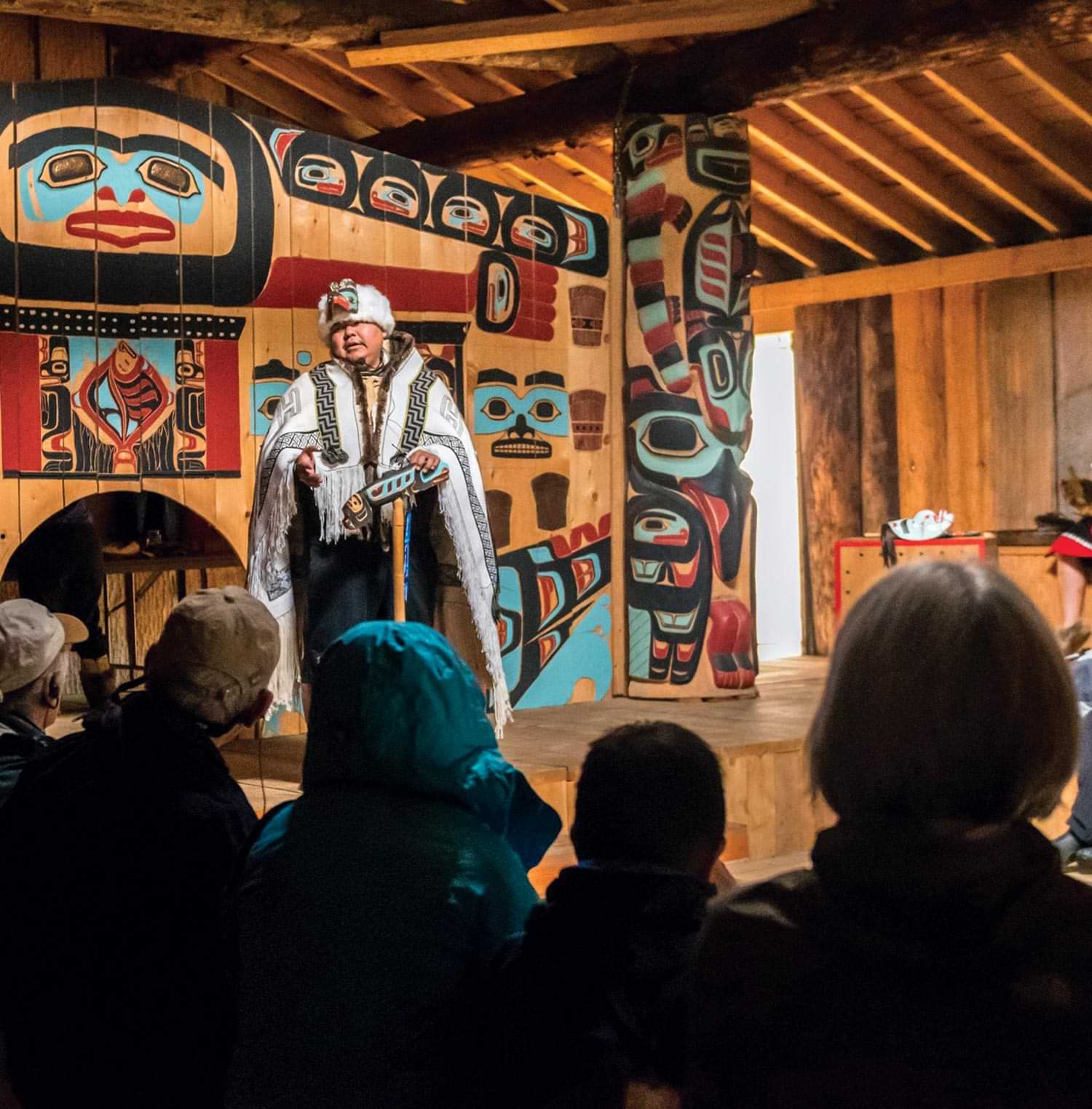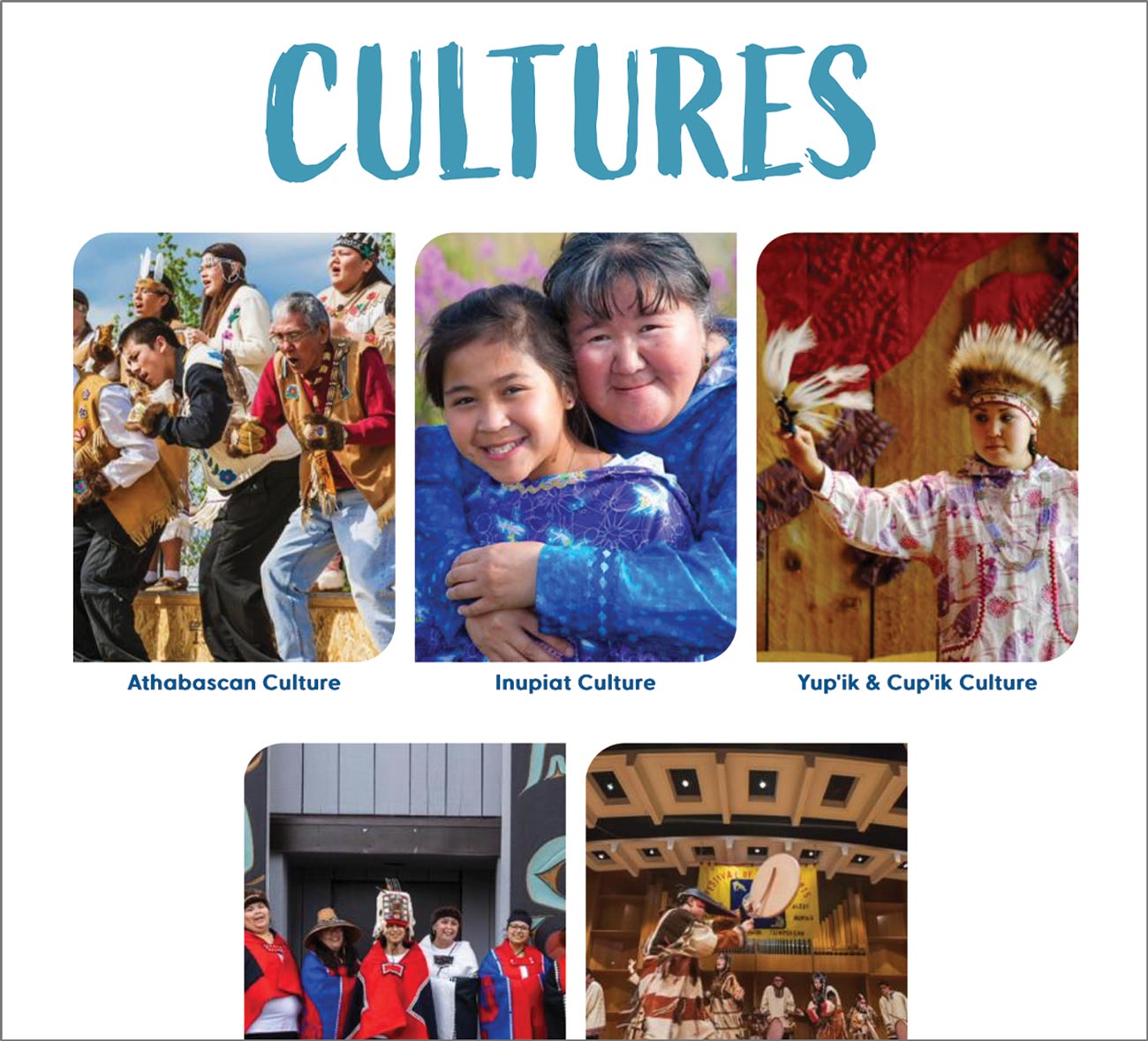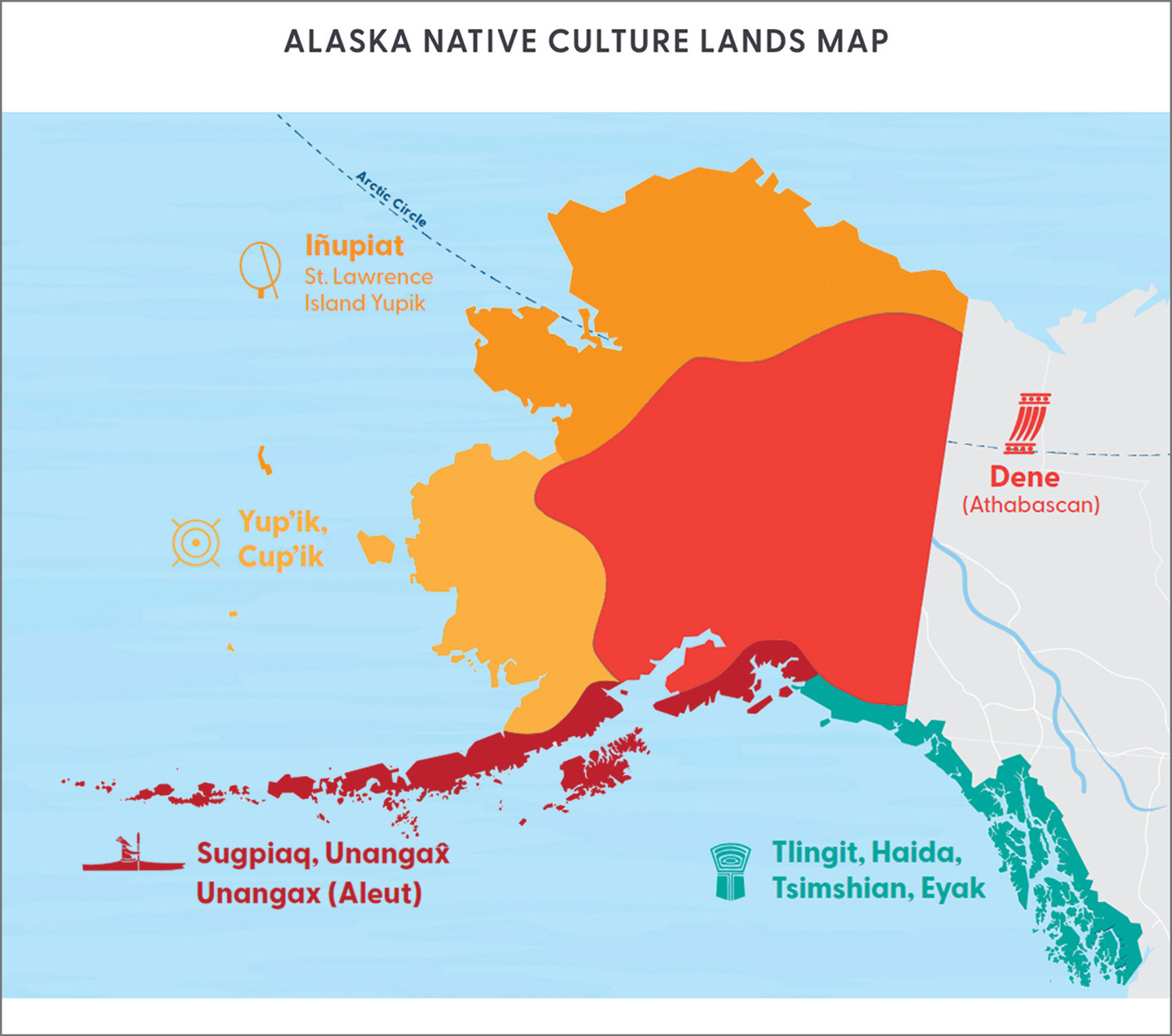A Seat at the Table
ver the last fifty years, Alaska Native corporations (ANCs) have become a vital part of the state’s economy. They represent a variety of industries, including construction, environmental services, government contracting, natural resource development, technology services, and real estate. They also play a major role in tourism.
Like many economic sectors, the COVID-19 pandemic slammed the Alaska tourism industry. The last couple of seasons interrupted an emerging new direction involving cultural tourism.
Sarah Leonard, president and CEO of the Alaska Travel Industry Association (ATIA), is keen on developing more opportunities for tourism. ATIA promotes Alaska’s tourism industry as an economic opportunity, providing statewide marketing resources, education resources, and advocacy to members.
Recently, the US Department of Commerce’s Economic Development Administration awarded a $10.5 million grant to the State of Alaska that Governor Mike Dunleavy designated to ATIA. The grant is meant to help tourism businesses and Alaska’s communities recover from the COVID-19 pandemic.
The grant made possible major updates for ATIA’s webpage with new features, particularly a cultural tourism emphasis. A map on the site (see sidebar) highlights Alaska Native lands and their location, and it includes the appropriate Native land acknowledgment. ATIA’s online interactive map was developed with ATIA’s Cultural Enrichment Subcommittee.
In years prior ATIA did not emphasize Alaska Native villages and Alaska Native stakeholders in a meaningful way. Leonard was key in inviting greater inclusion for Alaska Native people and companies to communicate with villages, Tribes, and Alaska Native corporations for tourism opportunities.
“We were trying to do a better job about reaching out to villages, Tribes, and Alaska Native corporations to be part of our committees or discussion meetings,” Leonard says. “We’ve had training and webinars concerning the pandemic and economic development that include rural areas that have more representation of Alaska Native villages and Alaska Native stakeholders.”
The redesign of the Alaska Travel Industry Association website adds an online interactive map, featuring a new trip planning tool. This provides information on Alaska Native cultures, tourism opportunities, and content in a user-friendly format.
“This website is vital to our dynamic destination marketing program and is designed to showcase the state’s beautiful mountains, glaciers, wildlife, and cultures,” Sarah Leonard, president and CEO of ATIA says. “In fact, an integral part of the new content development that was to enhance and incorporate Native and cultural tourism imagery and information.”
Connect the Dots
Emily Edenshaw was recently elected to the ATIA board of directors executive committee as secretary/membership chair. She is also the president and CEO of Alaska Native Heritage Center (ANHC), the living cultural center in northeast Anchorage. ANHC promotes the active observance of Alaska Native culture and traditions. It is the only statewide cultural and education center dedicated to celebrating all of Alaska’s cultures and heritages from five major regions.
“In 2017 I went to an ATIA board meeting and there was time for public comment. I asked if they valued Indigenous people, do they value cultural tourism, and if our Indigenous voices were being represented.”
— Emily Edenshaw
President and CEO of Alaska Native Heritage Center
ATIA board of directors executive committee secretary/membership chair

“In 2017 I went to an ATIA board meeting and there was time for public comment,” Edenshaw says. “I asked if they valued Indigenous people, do they value cultural tourism, and if our Indigenous voices were being represented through ATIA.”
Edenshaw says she also had the chance to review the board reports and financials, and then she started to connect the dots. She recognized that ATIA would be responsible for marketing Alaska as an Indigenous place. Importantly, she also discovered that at that time there was no money spent on cultural tourism.
She well understood that whenever a project is under development, whether it’s a tourism opportunity or transportation access for natural resource development, the appropriate ANCs and village organizations ought to be included.
“If you value [cultural tourism], then why aren’t you spending any money on it?” Edenshaw recalls asking at the ATIA meeting.
Soon after, ATIA, under Leonard’s leadership, sought to actively engage with the Alaska Native community.
“The last three to four years we have done a better job outreaching to villages, Tribes, and ANCs to be part of our committees or discussion meetings,” Leonard says. “One example is we reached out to Camille Ferguson [economic development director for the Sitka Tribe of Alaska] and Edenshaw to run for the ATIA board of directors.”
ATIA holds member-elected positions by region. Ferguson was appointed to the board of directors as well as Edenshaw. They were actively recruited to help develop and include Native organizations and rural areas to have greater representation of Alaska Native villages or Alaska Native stakeholders.
“Cultural tourism includes destination marketing programs that have historically marketed different cultural experiences,” Leonard says. “More recently, and I think rightly so, we’ve had an emphasis with our Alaska Native stakeholders to improve on our content around Alaska Native cultural tourism and working to develop appropriate images in partnership and sharing those messages or amplifying that message and then trying to gather shared content, like maps and such.”
Ferguson has overseen the Sitka Tribe’s forays into cultural tourism. She established, expanded, and managed tourism, transportation, and gaming departments, the Tribal Tannery, as well as the Community House Convention facility.
Ferguson recently received ATIA’s Denali Award, its highest award for professionalism and leadership, as well as the American Indian Alaska Native Tourism Association President’s Award and the Department of Interior’s Director’s Partnership Award.
— Camille Ferguson
economic development director for the Sitka Tribe of Alaska
Life Through an Indigenous Lens
Defining cultural tourism is important, especially given that Alaska Native cultures are as diverse as Alaska itself. Most of the villages are remote and off the road system, with many having a population smaller than 200.
“Cultural tourism is a way of life,” Ferguson says. “A way of life that is interpreted by Indigenous people in how they live, what they eat, what they wear, or the landscape around them that is [connected to the Indigenous] place names.”
The 2022 Heritage and Cultural Tourism Conference hosted by the Sitka Tribe in March featured ATIA’s Leonard as a keynote speaker. The conference agenda included, in part, the economic impacts of cultural tourism, understanding the cultural and heritage traveler, and assessing community cultural and heritage development.
“Recently we’ve seen changes,” Ferguson says. “Historically, the villages and ANCs have not had a seat at the table. It was only the past couple of years we’ve been actually brought to the table at the state level with ATIA. This has been a positive change. You can see the difference just within the Heritage and Cultural Tourism Conference and the people that want to be a part of the conference. That includes cruise line representatives [and] Alaska Airlines, as an example.”
Historically, the majority of Alaska’s tourists visit by cruise ship. However, due to COVID-19 the cruise industry was shut down for the 2020 season, and the 2021 cruise season started about three months late with only eight ships docking instead of the usual thirty or more.
Even as Alaska’s tourism industry anticipates a recovery from COVID-19, it’s looking to partner with ANCs and diverse Alaska Native communities, a vital and meaningful way to share the rich cultures of Alaska and to provide better appreciation that reflects greater authenticity.
“We have to understand that every day we fight stereotypes,” Edenshaw explains. “There’s so much information out there around Alaska and it is too often assumed we were born in an igloo or that it’s just Indians and Eskimos. I think that as Alaskans in terms of tourism and the power that tourism has, we could really demystify and combat those stereotypes in a really meaningful way.”
Richard Perry (Yup’ik/Athabascan) is a writer, playwright, and regular contributor to First Alaskans. This article was first published in Alaska Business, akbizmag.com.

